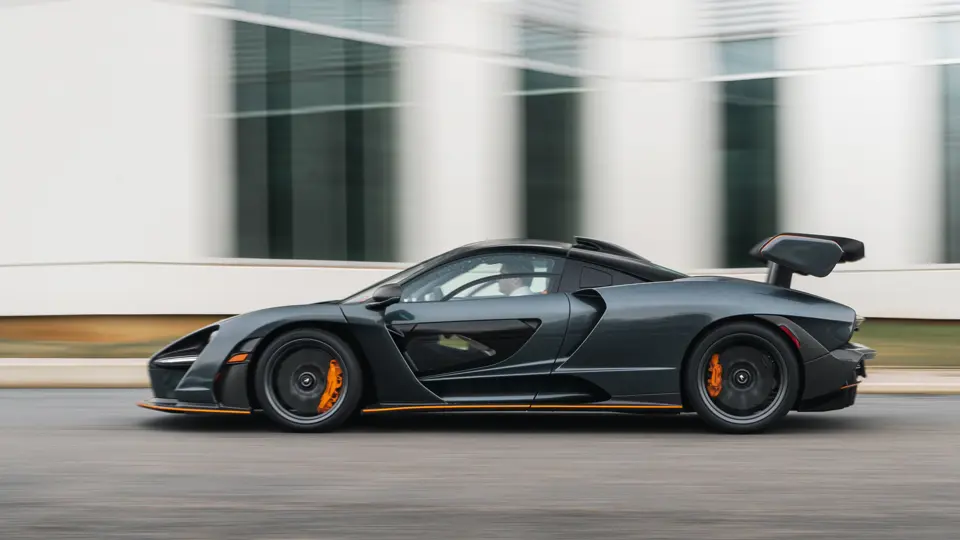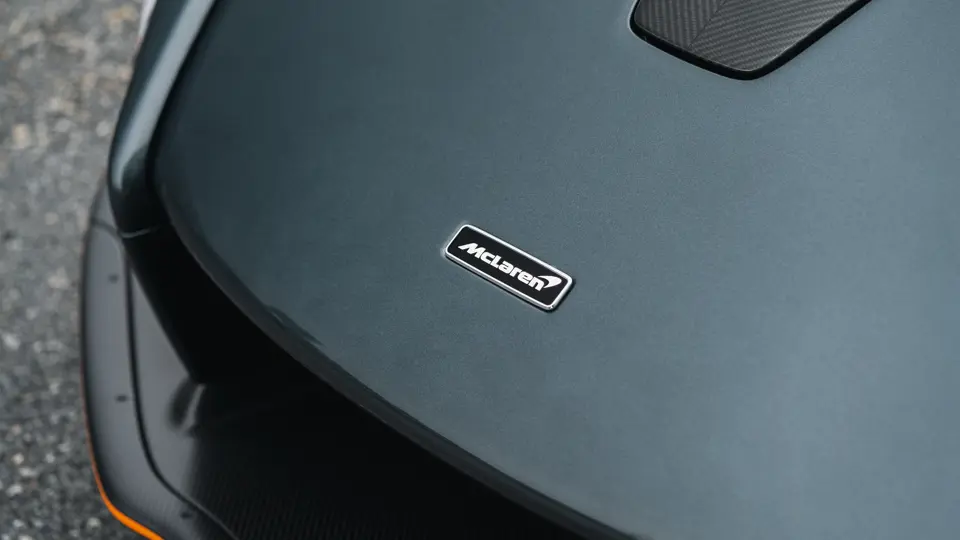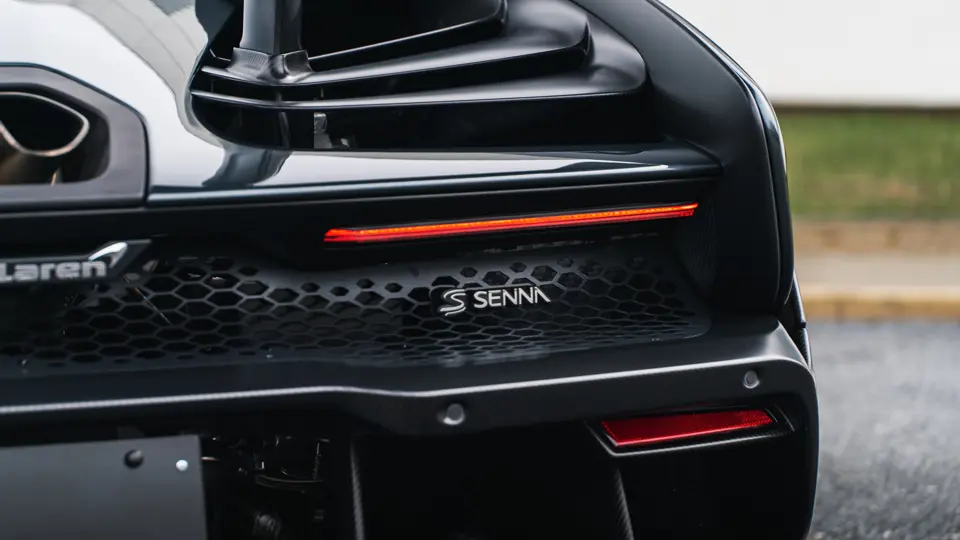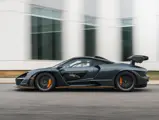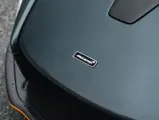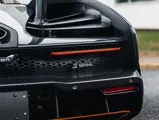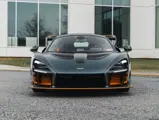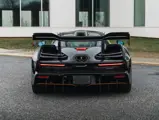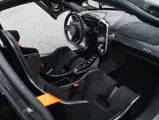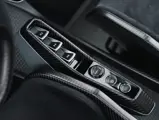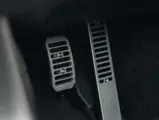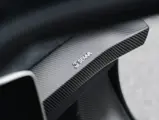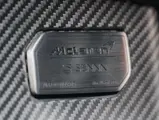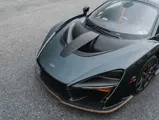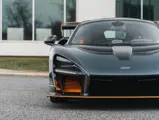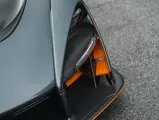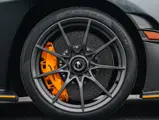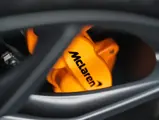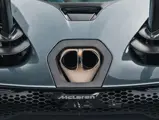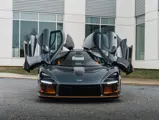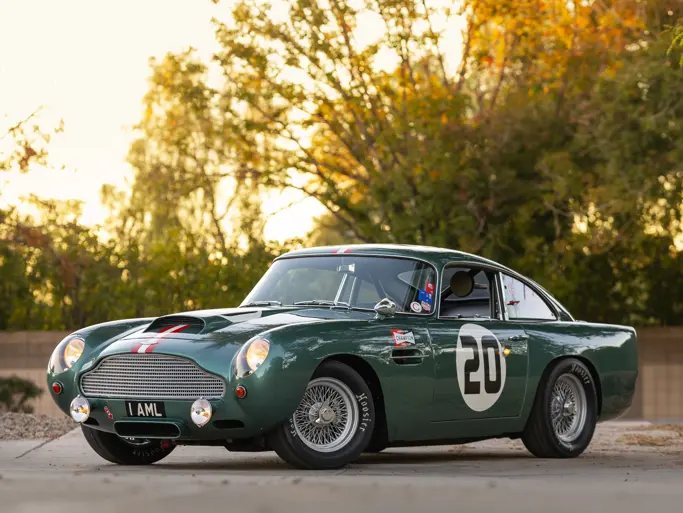The Senna joined the P1 and F1 as the third addition to McLaren’s “Ultimate Series” when it was unveiled at the 2018 Geneva Motor Show. Named after the late Ayrton Senna and dedicated to his three Formula 1 World Championships with McLaren between 1988 and 1993, the car was designed with one purpose: to be the most track-focused road car McLaren had ever built. The Senna was to provide the purest connection between car and driver in the pursuit of the quickest lap times.
In contrast to the P1, the Senna’s power train forwent any form of electric assistance and instead used a modified version of the company’s 4.0-liter twin-turbocharged V-8 engine. Code-named M840TR, it is the most powerful engine ever installed in a McLaren road car, with a peak output of 789 bhp. It features dry-sump lubrication, lightweight materials for the rods and pistons, and a pair of ultra-low-inertia twin-scroll turbochargers equipped with electronic waste gates for instant throttle response. It breathes through a bespoke carbon-fiber intake plenum, which is fed cold air from the motorsport-inspired roof-mounted snorkel.
Despite the breathtaking power on offer, where the Senna really works its magic is with its chassis and its active aerodynamics, the latter of which is unparalleled on any other road car. The front of the car is dominated by a massive raised splitter and large air intakes, which feature active winglets to guide air underneath the body. Warm air from the radiators is channeled from behind the bonnet and over the roof of the car, deliberately missing the snorkel intake before being treated by the enormous active rear wing. The wing itself is controlled by hydraulics and moves constantly to suit the driving scenario, either to act as an air brake, increase downforce, or equally trim drag as part of an active Drag Reduction System (DRS). It is complemented at the rear by a large double diffuser and second fixed lower wing, which are fed exhausted air from the louvered engine cover. At 155 mph, the Senna can produce 800 kg of downforce, equating to a massive 40 percent increase over the McLaren P1.
The chassis is based on the Monocell III and features lightweight materials and carbon fiber throughout for stiffness and lightness. The seats weigh under 8 lb each, the front wings under 1.5 lb, and the massive rear wing less than 12 lb. The Senna also uses an upgraded version of McLaren’s RaceActive Chassis Control II system, which features an active double wishbone and hydraulic damper setup from the P1, allowing for variable ride height, damping, and stiffness modes according to the driver’s desired setup. Keeping all this performance in check are Formula 1–inspired carbon brakes developed by McLaren and Brembo, with discs that take seven months to make, each one with integrated cooling vanes and a thermal compound that is three times more conductive than conventional carbon-ceramic brakes. Indeed, so potent is the braking system that the Senna currently holds the record for braking performance for production cars: 124 mph to a standstill in just 100 meters.
Other performance statistics to which the Senna can lay claim are equally impressive: 0–62 mph in 2.8 seconds, 0–124 mph in just 6.8 seconds, and a dry weight of just 1,200 kg, which equates to a power-to-weight ratio of 658 bhp per ton. It thus eclipses even the P1 statistic (647 bhp per ton), while simultaneously offering significantly more downforce.
The Senna was sold out before it was publicly revealed, with less than a third of the 500 cars making their way to the United States. In an era when manufacturers rely more and more upon hybridization and the use of electricity to unlock extreme performance, the Senna stands as one of the last conventionally gas-powered hypercars.
This McLaren Senna, serial number 146, is one of just 500 examples produced. It was delivered to its first and only owner in early 2019. It is finished in Sarthe Grey and accented by signature McLaren Orange paintwork. The wheels feature a Satin Raw finish, and the calipers and inner-fender aeroblades are finished in orange. Further, the car sports the optional perimeter pack, with orange accents lining the sinister carbon finish. The interior features optional matching seat belts, a full Alcantara steering wheel, and the lightweight Bowers & Wilkins seven-speaker audio system. Other options include front and rear parking sensors and rear-view camera. To date, it has covered just over 200 miles and presents in as-new condition.
The Senna is the pinnacle McLaren road car. This car, offered from single-ownership, in enviable specification, with just over 200 miles from new, is a highly desirable example. No hypercar collection should be considered complete without one.





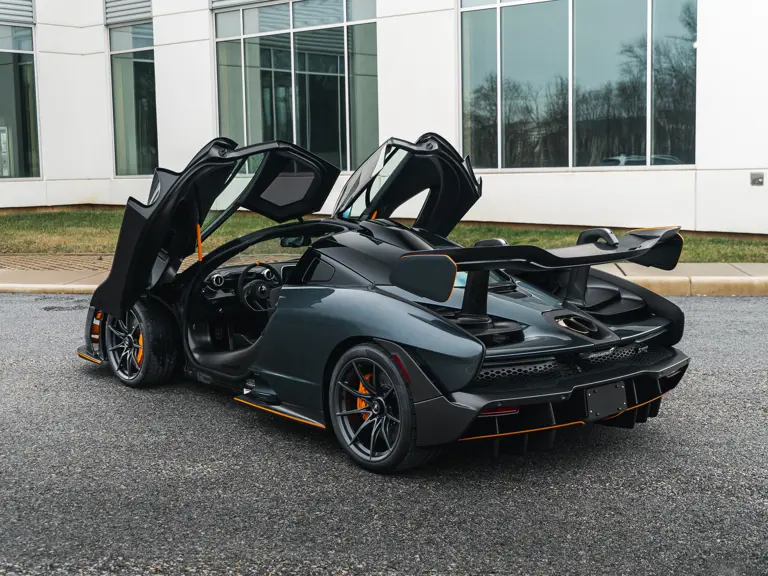
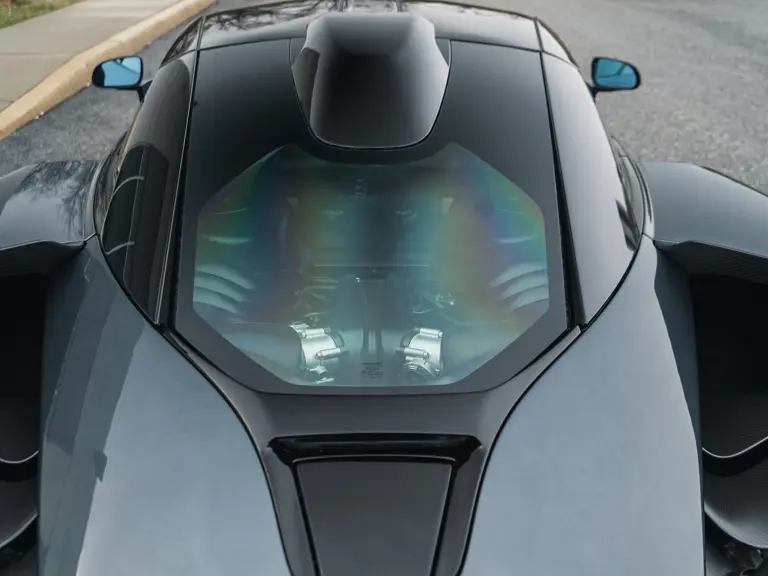
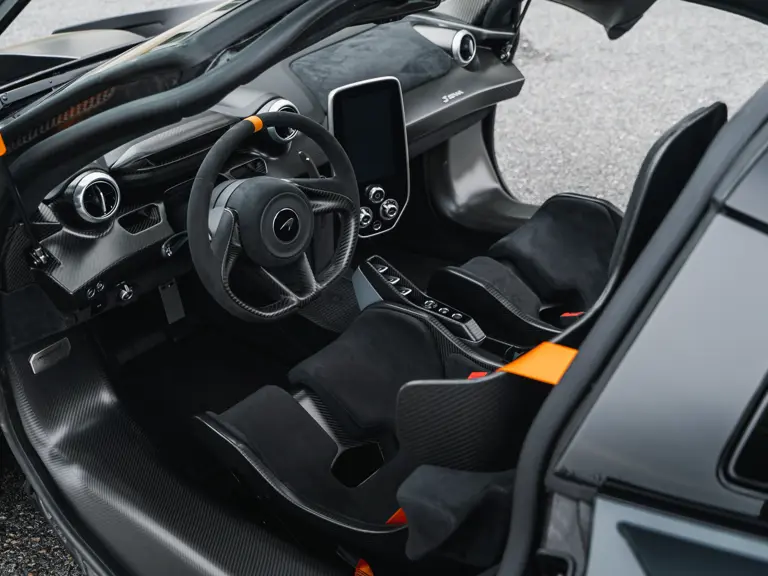


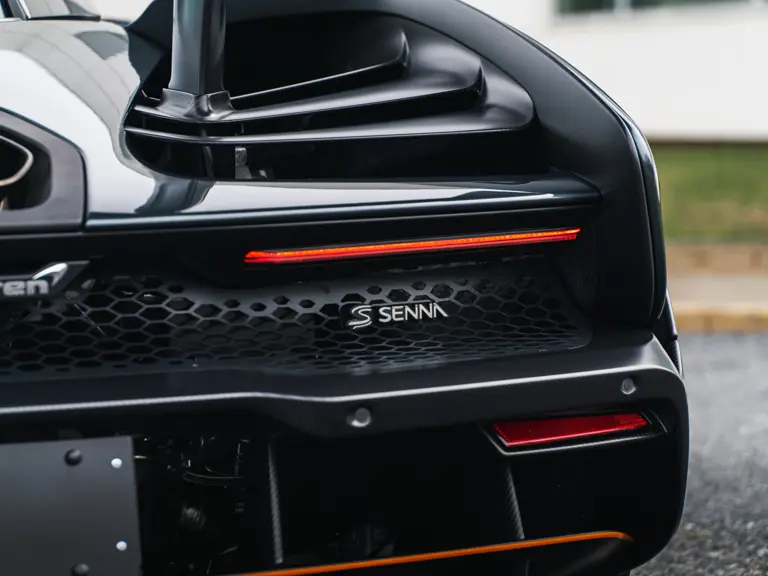
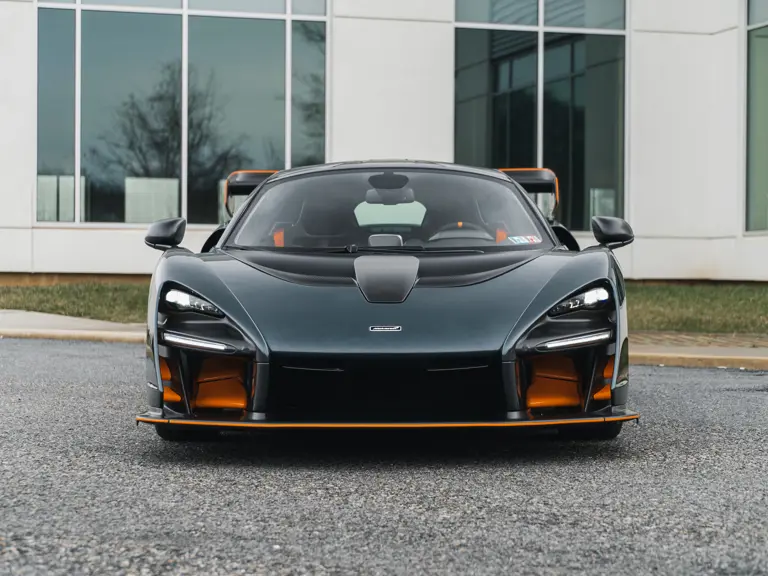
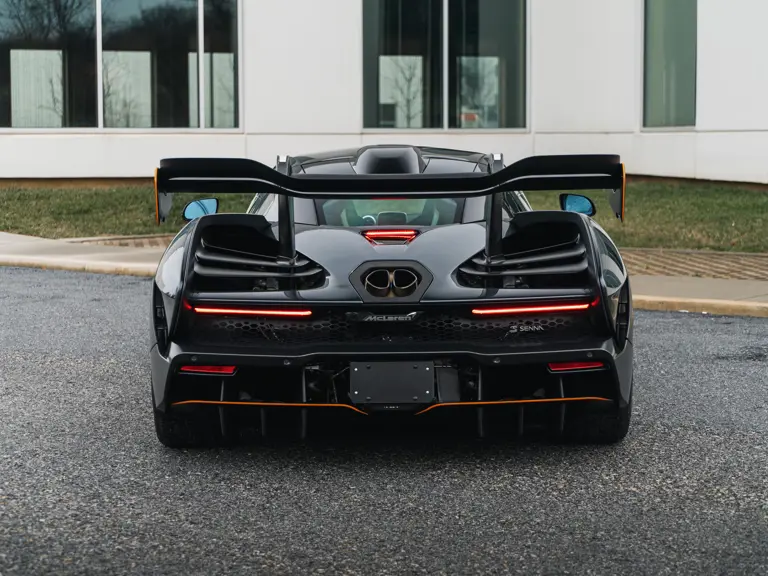


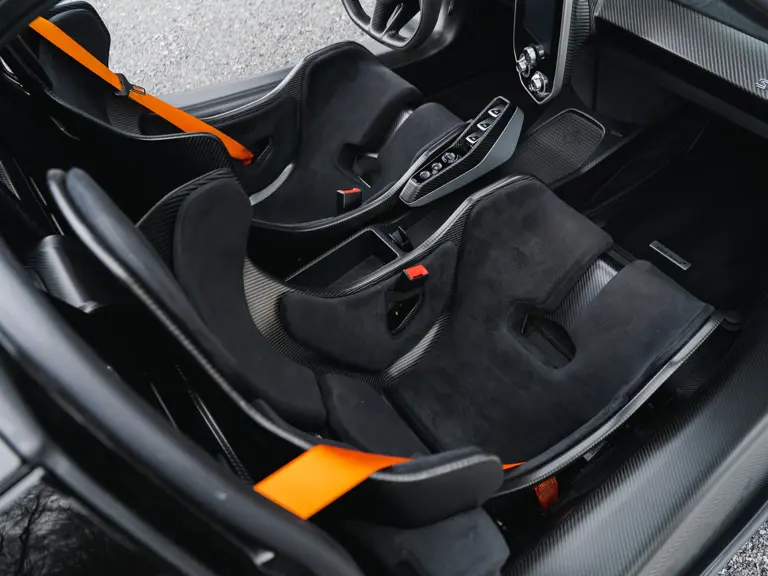


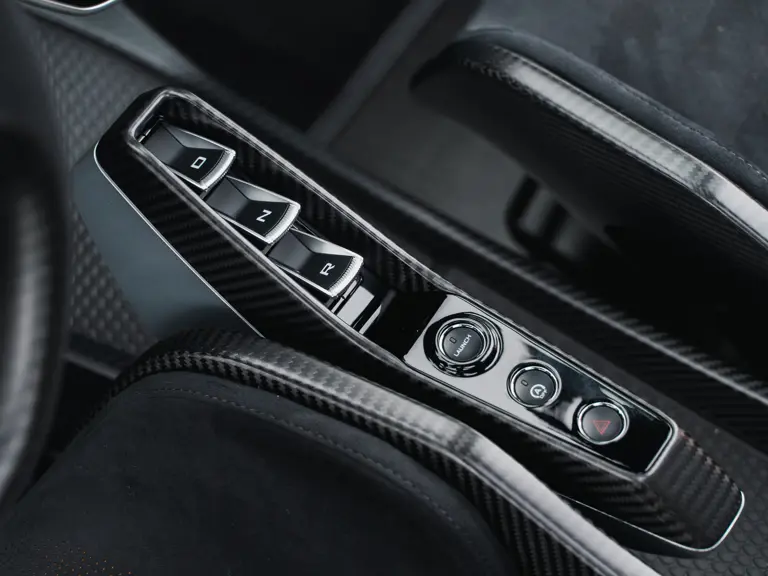
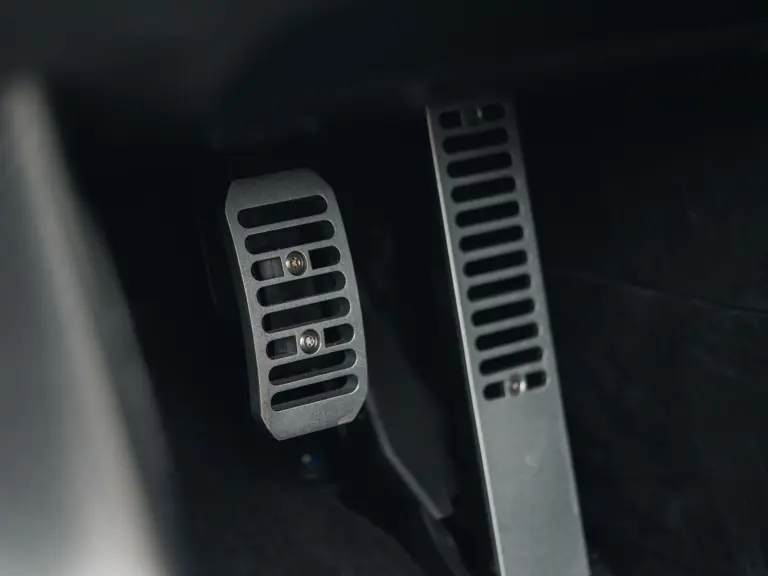
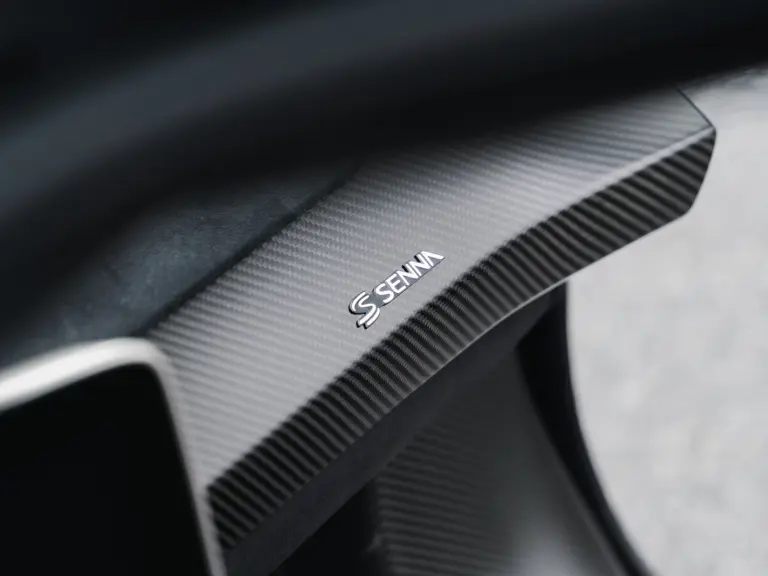
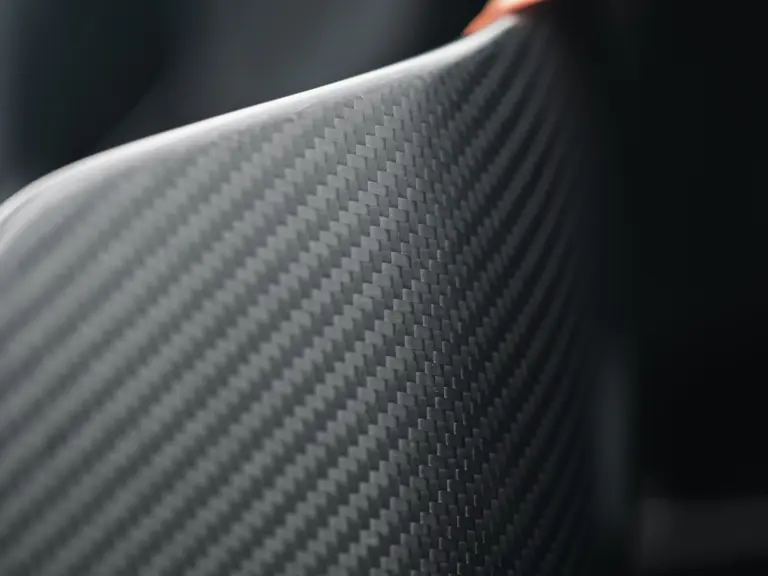
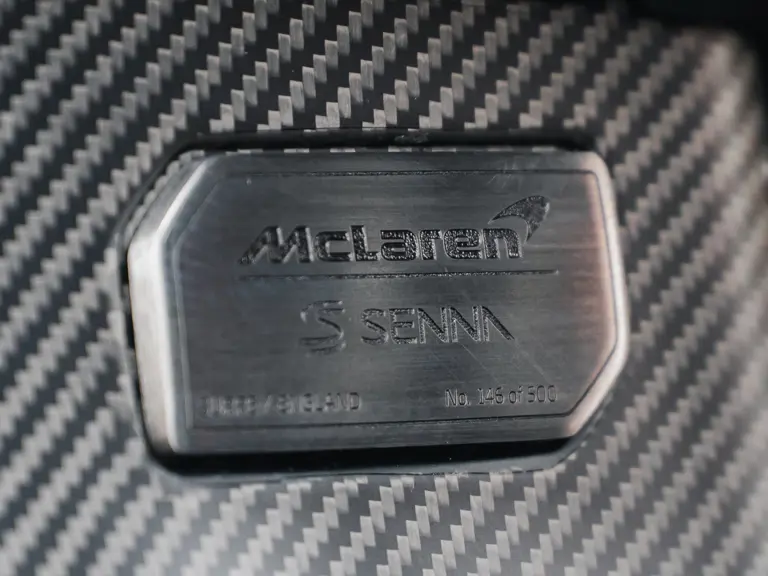

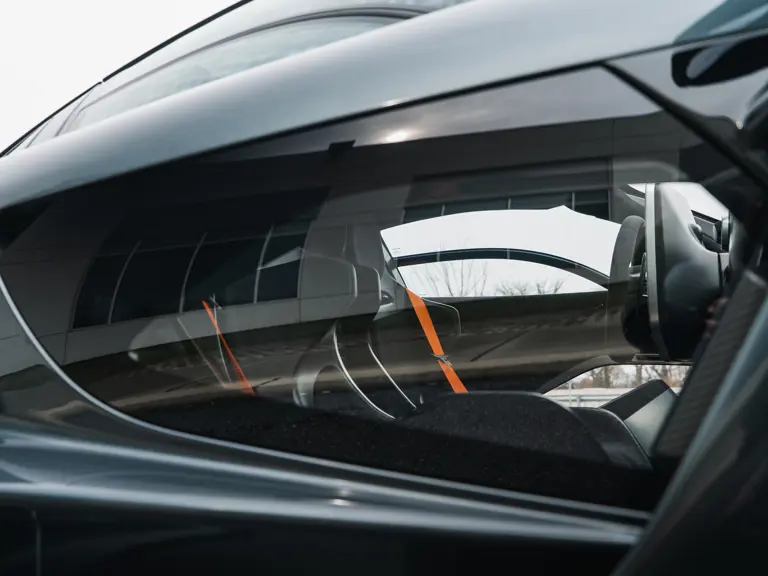


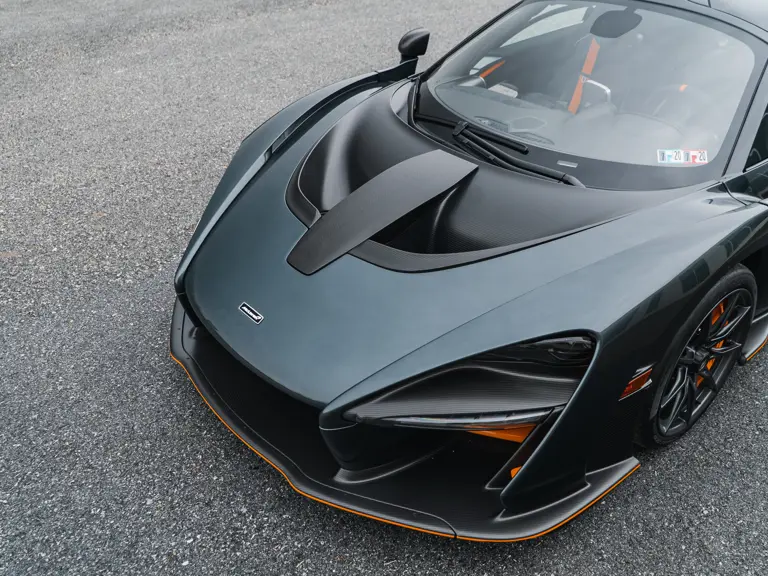

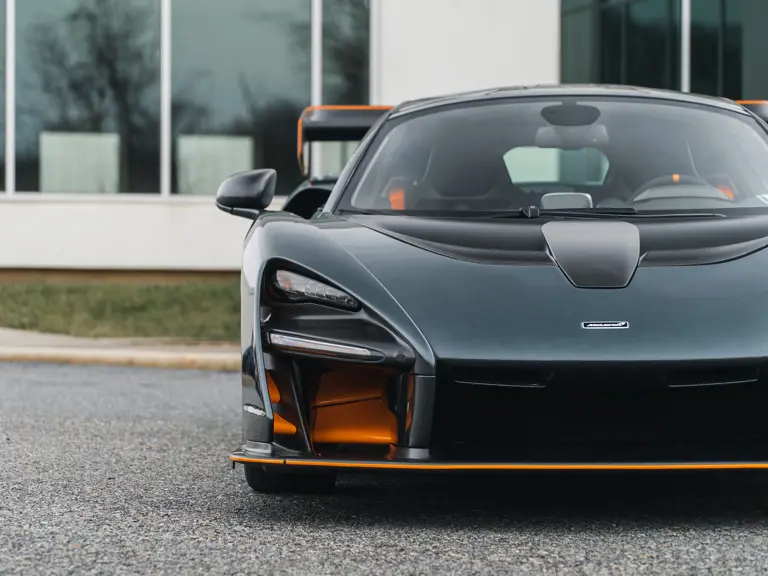
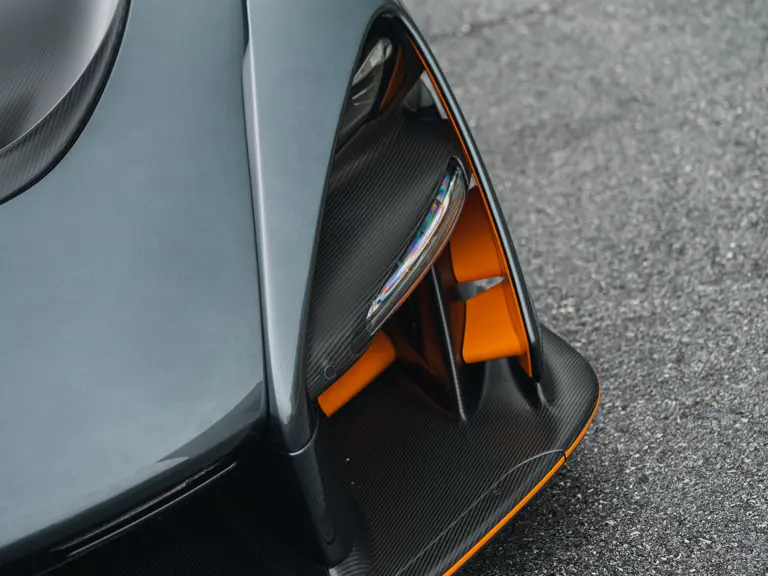
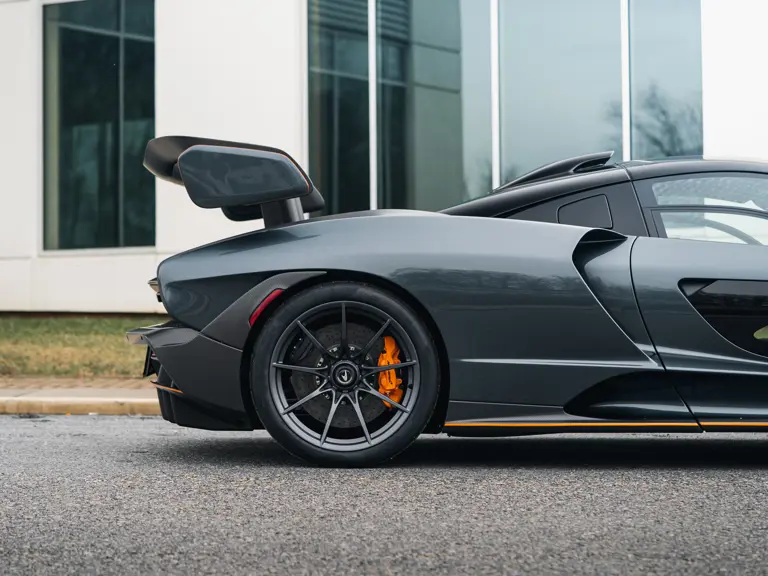
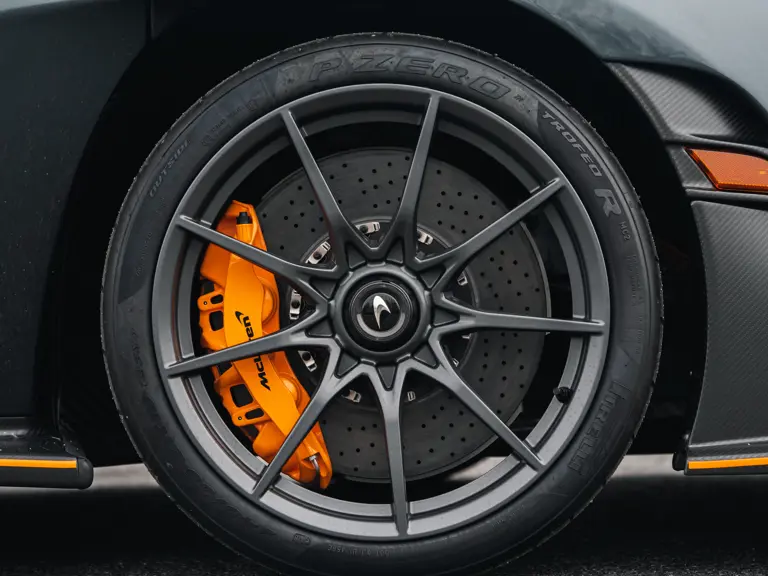
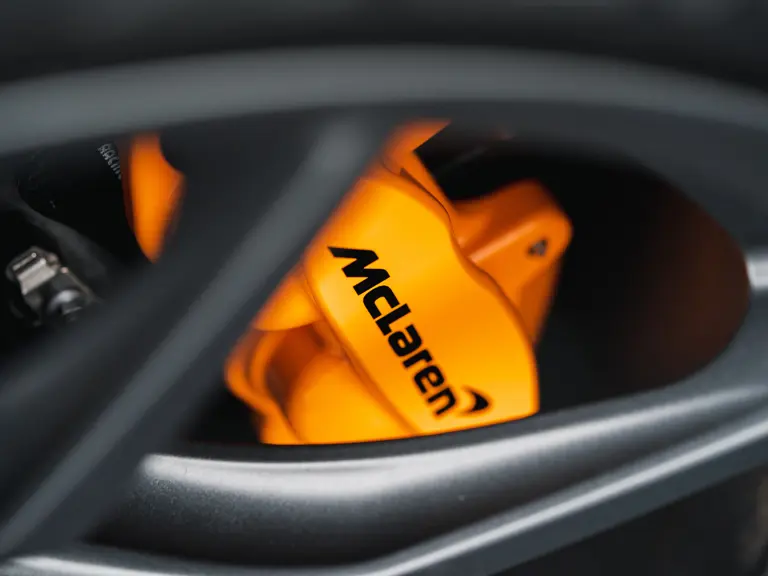




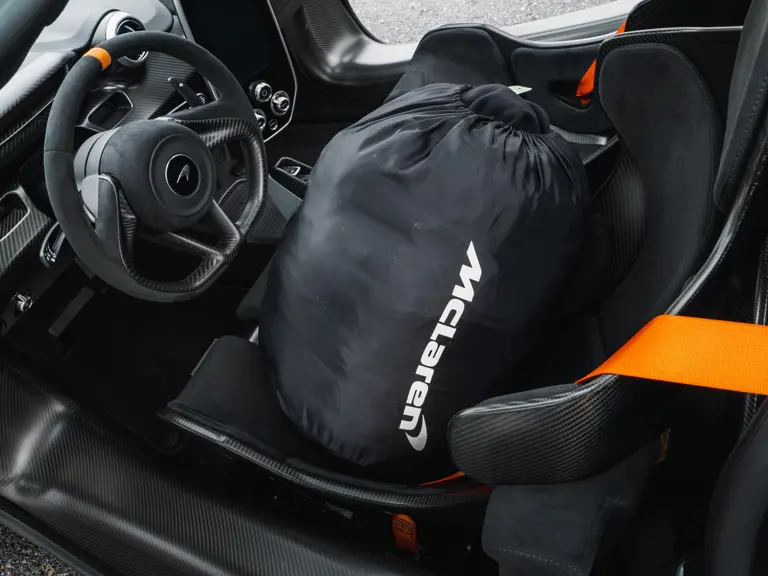


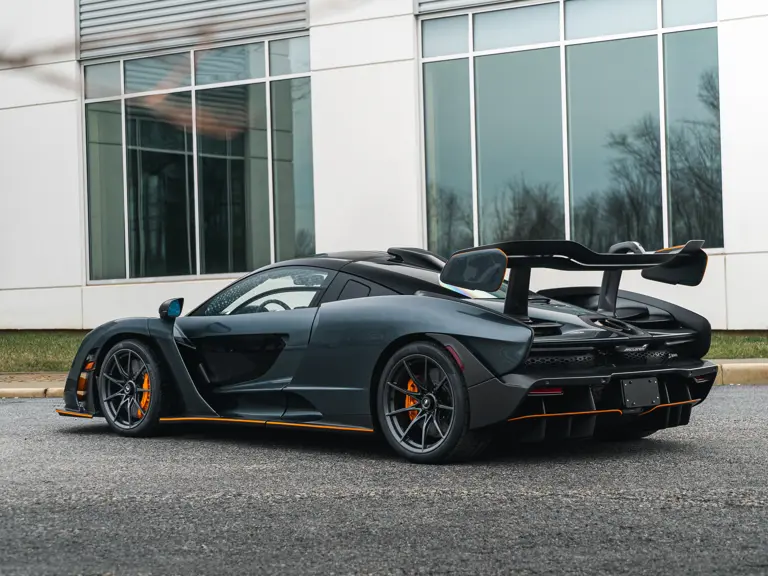

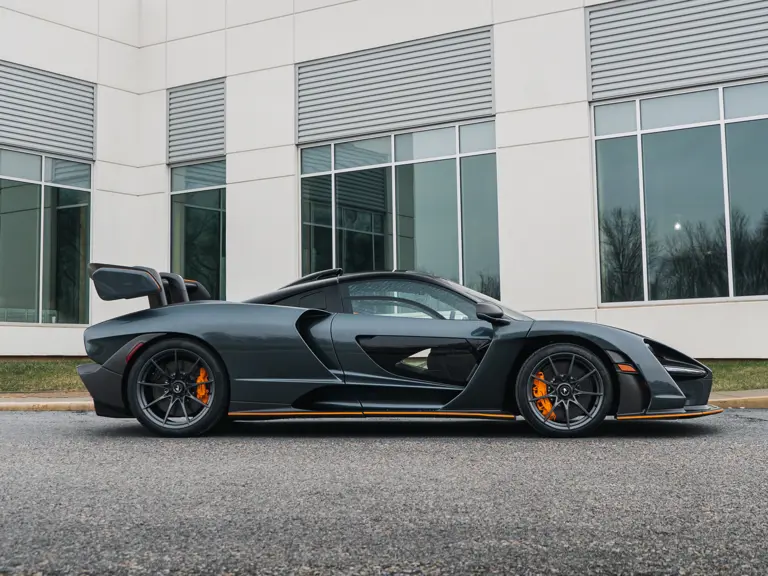
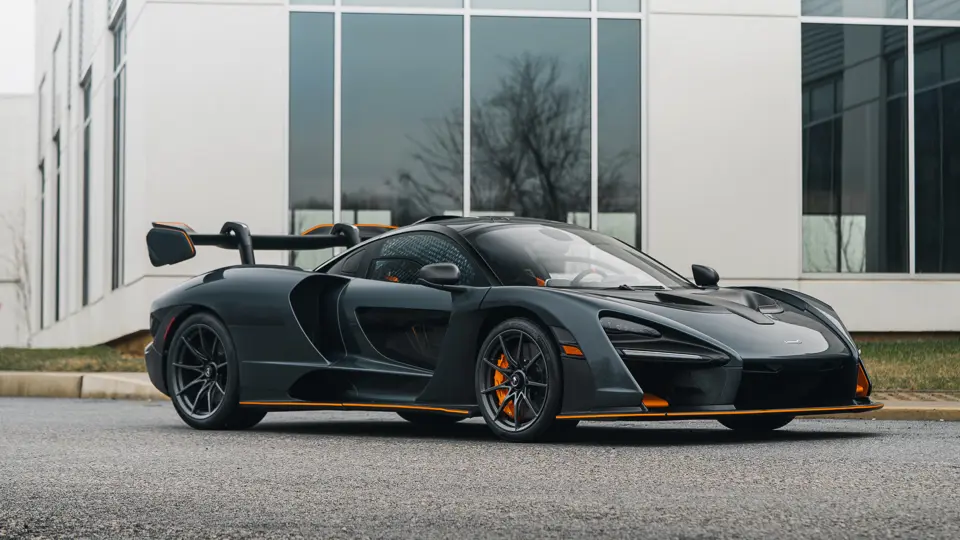
 | Philadelphia, Pennsylvania
| Philadelphia, Pennsylvania
